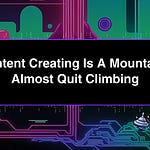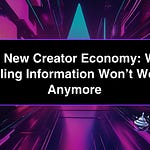Ten billion dollars. One hundred million users. And a product that feels like a cultural phenomenon.
That's Notion today.
They built a $10 billion empire using free product marketing.
But here's what most people miss about their meteoric rise: Notion didn't get here through massive ad spends, a huge sales team, or growth hack shortcuts.
They built a $10 billion empire using something far more powerful – their own users.
Think about it.
Every creator who builds a Notion template becomes a product marketing lead magnet – not just for the creator’s own business, but for Notion itself. It's pure marketing genius.
Today, we're diving deep into how a startup that was once on the brink of failure engineered one of the most brilliant product marketing strategies of all time – and how you can apply these same principles to your business.
So in this post, we'll break down Notion's journey from where they’re at today, to how they first got started. We'll explore how they turned a clunky product into a template-driven system that essentially markets itself.
And most importantly – we'll extract actionable lessons that you can apply to your own business.
Whether you're building a SaaS company, creating digital product, or running a service business, Notion's community-led growth strategy offers a masterclass in product marketing.
This is How Notion Built a $10 Billion Empire With Product Marketing (And What You Can Learn From It)
2025: The $10 Billion Productivity Giant
Today, Notion is everywhere.
From personal to-do lists to entire company workflows, it powers the workspaces for some of the biggest brands like Pixar, Spotify, and Amazon, as well as millions of students, freelancers, and entrepreneurs.
But here’s what’s wild:
Unlike most SaaS companies that burn cash on advertising, Notion barely spends anything on paid marketing. Instead, they built a product so shareable that it does all the marketing for them.
Let’s look at the numbers:
Over 7 million YouTube videos about Notion.
Over 4 million publicly shared templates.
Thousands of paid courses built around their app.
A booming ecosystem used by consultants and influencers.
Notion’s product isn’t just a tool—it’s a platform for creators to build and distribute their own digital assets.
And every time a creator shares a template, that’s free marketing for Notion.
This wasn’t just luck either. It was product marketing genius.
2019-2023: The Community-Led Growth Explosion
By 2019, Notion had found a market fit for their product.
But what happened next is where the magic really began.
They basically handed their marketing over to their own users. They sat back, letting their customer base generate content around the templates they created.
Thomas Frank built an entire YouTube channel around Notion, pulling in millions of views.
Marie Poulin launched a Notion Mastery course, turning herself into one of the top Notion creators.
Easlo, among other creators started selling Notion templates, making six figures a year.
And it wasn’t just big names either. You also had:
Students who shared their Notion study systems.
Freelancers who built Notion dashboards for clients.
Agencies who created content marketing workflows inside Notion.
Entrepreneurs who built business trackers, hiring systems, and so much more.
Every single one of these users published content and templates, that served as a lead magnet for Notion. And Notion made sure that every new shared template brought them more users.
Here’s how they engineered this:
Templates required an account. If you wanted to use someone’s Notion template, you had to sign up for an account first. Instant leads.
They incentivized creators. Notion gave away account credits (and later real cash) to creators who referred new users. This turned template creators into a marketing force.
They amplified their community. Notion’s always showcased user-created templates, driving even more traffic to them on social media.
The result?
A self-sustaining marketing loop:
✅ Users created templates → Shared them → New users signed up.
✅ Notion grew without spending a dime on ads.
✅ Creators built their businesses around Notion—which kept marketing for them free.
This is the ultimate form of product marketing:
Make your product, then turn your audience into your marketing team.
2018: The Near-Death Pivot That Changed Everything
But before Notion became the leading app of the productivity world, they were on the brink of failure.
In 2018, things were looking bad.
Their product was clunky.
Customer Growth was slow.
They were running out of money.
Co-founder Ivan Zhao literally moved to Japan to cut costs while they figured out how to pivot.
The game-changing decision?
They reworked Notion to be template-driven.
Instead of just being a note-taking app, they turned it into a system where users could build, share, and remix their own workflows.
This one shift changed everything because it:
Gave users full customization flexibility.
Made the product easier to use.
Created a built-in referral engine.
Notion didn’t need a massive ad budget—they just needed to make sure every new user can bring in more users. This is exactly how you should be thinking about your own product, course, or service.
Ask yourself: Does my free product promote my paid product(s)?
The Marketing Playbook You Can Steal From Notion
So, how can you apply Notion’s strategy to your own business?
They created a product in which their users can easily share their Notion templates, which pushed new users to open new accounts. Notion used their product’s sharing feature to expand their reach through their creators work.
This strategy works perfect for other SaaS companies, but how does this relate to the everyday creators building much smaller products?
It comes down to something that you can easily share with your audience. Start with a product you can give your audience for free (lead magnet), and implement content they can apply to solve their current problems. Then, provide the next logical solution to their upcoming problem within the product itself.
Notion executed this perfectly by offering a free plan that lets users experience the core features. They solve immediate needs through templates, systems, and trackers - but strategically reserve premium features for their paid tiers.
As users become more invested in the platform and hit the limitations of the free plan, upgrading to paid becomes the next natural step. This creates a smooth journey from free user to paying customer, all while delivering genuine value at every stage.
The second marketing lever they used was to incentivize their audience through a referral program. Notion rewarded its users with commissions for bringing in new sign-ups.
You can implement this by using the 5 marketing strategies I teach in my guide. You can get that guide for free here.
Whatever it is, make sharing beneficial for your audience.
Build a Marketing System That Works For You
Notion didn’t win by running ads.
They won by building a product that marketed itself.
And that’s exactly what I break down in my 5-Step Product Marketing Blueprint—a system designed to help creators, consultants, and entrepreneurs turn their product into a marketing engine.
Inside, I’ll show you:
How to use social media to attract the right customers.
How to build funnels that convert attention into sales.
How to create email sequences that keep your audience engaged.
How to design products that market themselves—just like Notion.
If you’re tired of grinding for every single sale, this blueprint is your ticket to sustainable growth.
Get the 5-Step Product Marketing Blueprint (Free)
Because at the end of the day, the best marketing strategy is a product so good that people can’t help but share it.
That’s it for this marketing story.
I hope you enjoyed it.
Follow me for more marketing stories like this.














Share this post